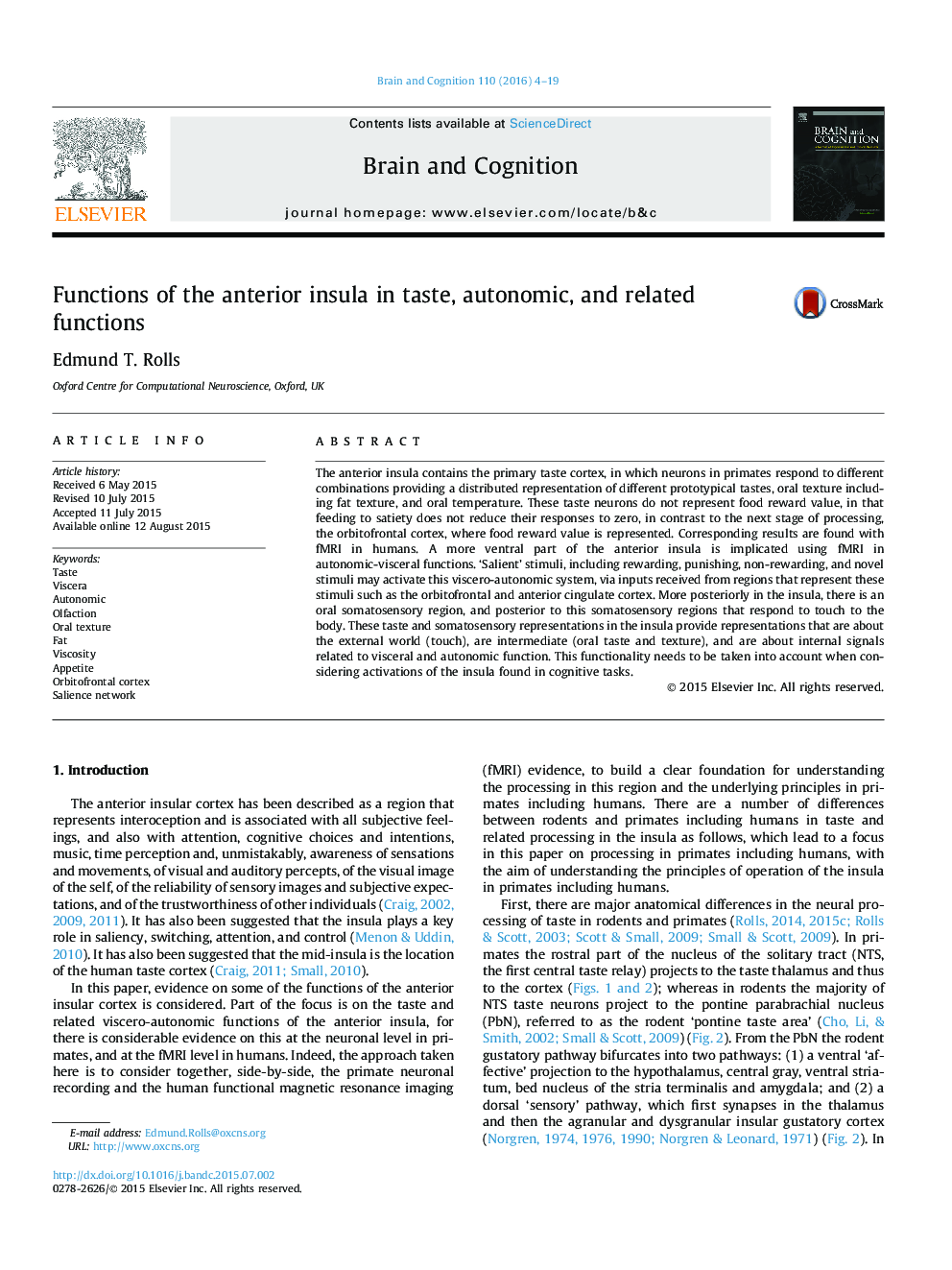| Article ID | Journal | Published Year | Pages | File Type |
|---|---|---|---|---|
| 5041203 | Brain and Cognition | 2016 | 16 Pages |
â¢In primates including humans, the insula is a cortical taste area.â¢The representation is of the quality and intensity not pleasantness of taste.â¢The insula also represents the texture and temperature of food.â¢There is a visceral representation in the insula close to the taste areas.â¢Activation of the insula in cognitive tasks may be related to its autonomic functions.
The anterior insula contains the primary taste cortex, in which neurons in primates respond to different combinations providing a distributed representation of different prototypical tastes, oral texture including fat texture, and oral temperature. These taste neurons do not represent food reward value, in that feeding to satiety does not reduce their responses to zero, in contrast to the next stage of processing, the orbitofrontal cortex, where food reward value is represented. Corresponding results are found with fMRI in humans. A more ventral part of the anterior insula is implicated using fMRI in autonomic-visceral functions. 'Salient' stimuli, including rewarding, punishing, non-rewarding, and novel stimuli may activate this viscero-autonomic system, via inputs received from regions that represent these stimuli such as the orbitofrontal and anterior cingulate cortex. More posteriorly in the insula, there is an oral somatosensory region, and posterior to this somatosensory regions that respond to touch to the body. These taste and somatosensory representations in the insula provide representations that are about the external world (touch), are intermediate (oral taste and texture), and are about internal signals related to visceral and autonomic function. This functionality needs to be taken into account when considering activations of the insula found in cognitive tasks.
